PI in the Sky
Brought to you by NASA and Sonoma State EPO

Dr. Mary Garrett,
Educator/Ambassador for NASA’s GLAST Programl
Introduction:
As modern children passively stagnate in the world of television where the
unexpected is normal, it is sometimes difficult for educators to help children
truly understand the wonder of the real world and the excitement of exploring
it. At
http://universe.gsfc.nasa.gov/
we can get a look at the way scientists are striving to understand our world.
But the terms and especially the numbers used by the scientists make it
difficult for the students to really understand what the scientists are
discussing. Trying to help children and the non-scientists of our culture to
understand the excitement behind the blasting rockets and the reason for the
many NASA missions, NASA scientists have worked with educators to develop
educational resources that can capture the imaginations and expand the
understanding of students. You can find many NASA educational resources at
http://teachspacescience.org, but
sometimes it is hard to see how they can be used in the classroom. In this
presentation, we will look at NASA developed materials and methods to teach
children about PI and why it is important. The PI in the Sky booklet
teaches science and geometry students grades 5-12 about pi-radians and degrees,
as a foundation for understanding subtended angles, apparent size, visual
acuity, and parallax. We will try some of these activities together, but first a
word from our sponsor.
Explore the era of star formation in the universe, the physics of dark matter
and the creation and evolution of galaxies

What is in the PI in the Sky Booklet?
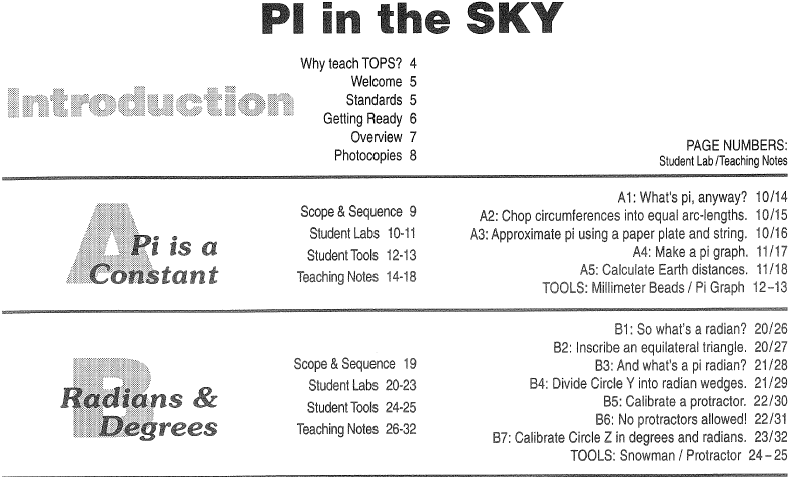
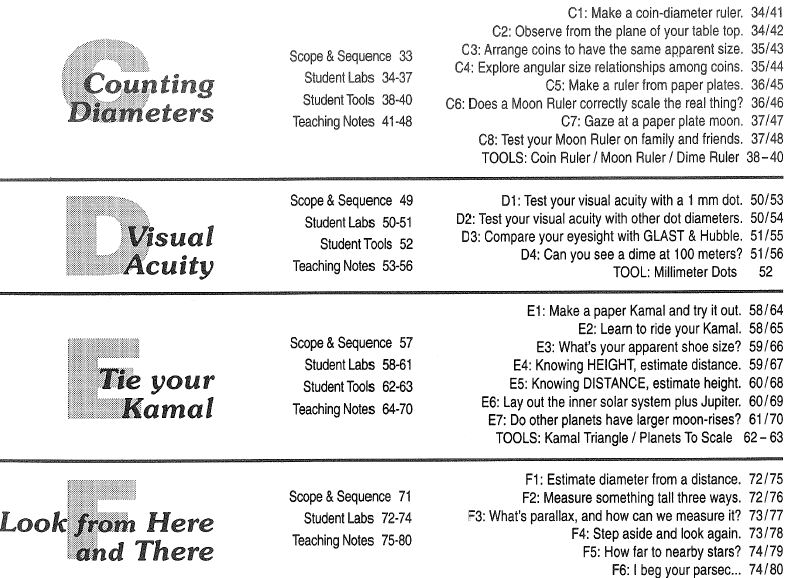
How are these "labs" related?

What is PI? (A1)
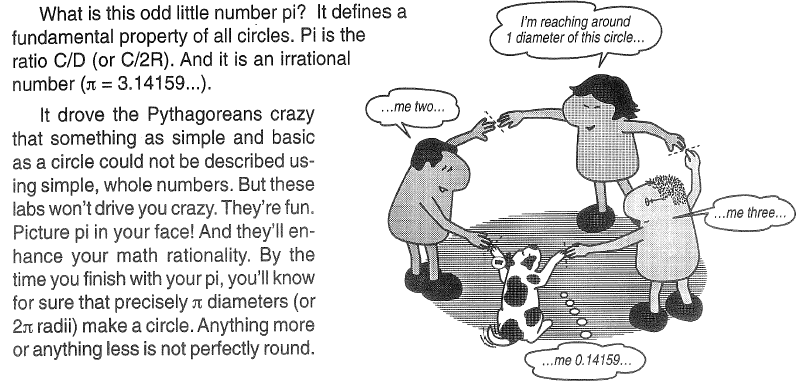
| |
Circle X |
Circle Y |
Circle Z |
| Circumferences |
|
|
|
| Diameter |
|
|
|
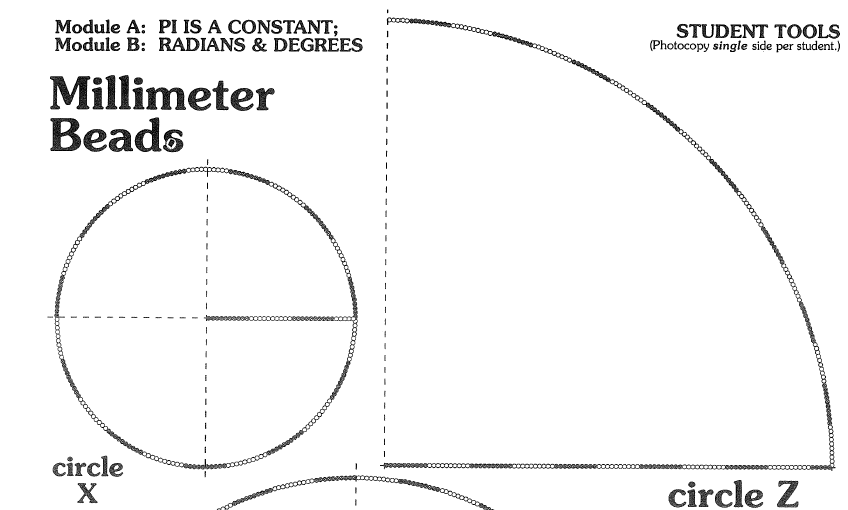
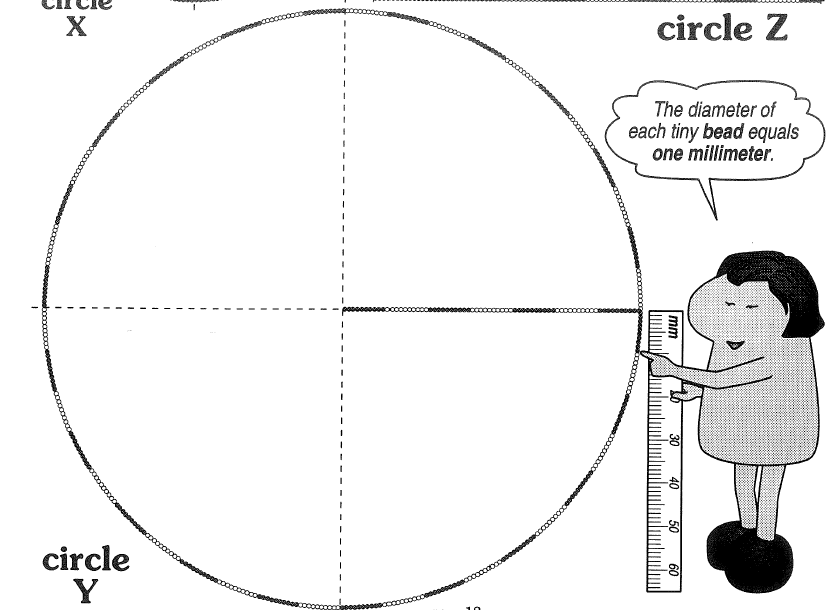
A2). How many diameters fit along the circumference
A3). Repeat with a string and a paper plate and other objects)
A4). Make charts and graphs of the circumference and diameter and
calculate slope. Use Excel for older students and talk about correlation
and Regression Analysis.
B1). So What’s a Radian?
- Balance Paper Plate on a Pin
- Draw the Radius on the Plate
- Use the index card to measure the radius
- Transfer this measurement to the pie plate
- Cut out the piece of pie formed by the radius
Point out that you have
6 wedges plus a little bit more
How much is that little bit more?
|
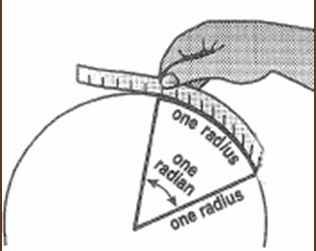 |
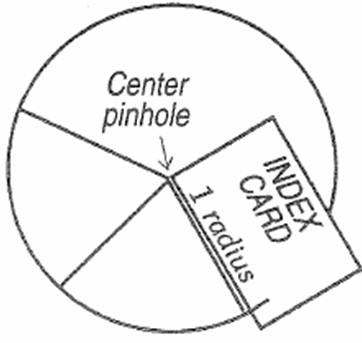

B4). How to determine that little bit more
 A MM bead Activity
A MM bead Activity
- Count the beads in the radius
- Mark the number of beads equal to the radii using colored pencils
- Count the number of beads left over
- Divide the left over number of beads by the number of beads in the radius.
http://www.mathlearning.net/learningtools/Flash/unitCircle/unitCircle.html
F). Looking at size and distance. Using the mm beads sheet, look
at 10 millimeters in each circle.

How do the angles compare? If the number of beads is the same and the
objects are the same size, why would the angles not be the same?
Point out that if you draw an object on circle ‘x’ of a certain size and the
same object on circle ‘y’ the angle will be smaller on circle ‘y’.
This is because the object on circle ‘y’ is farther away.
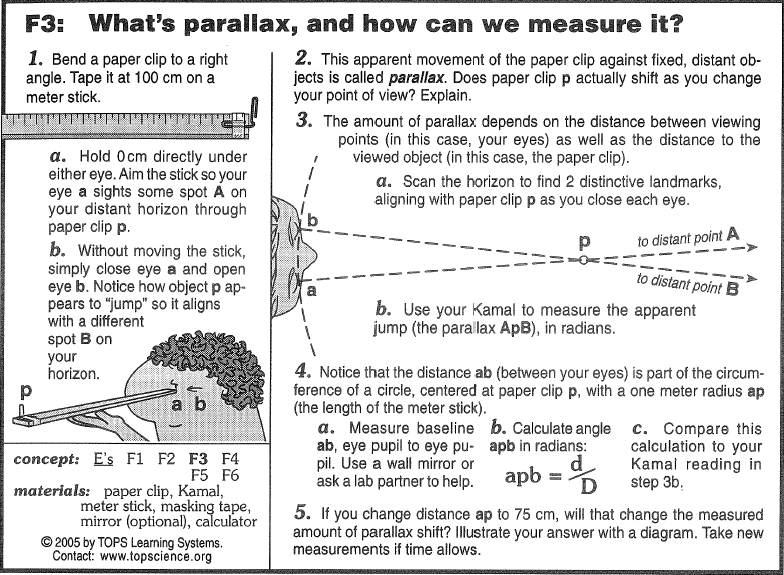
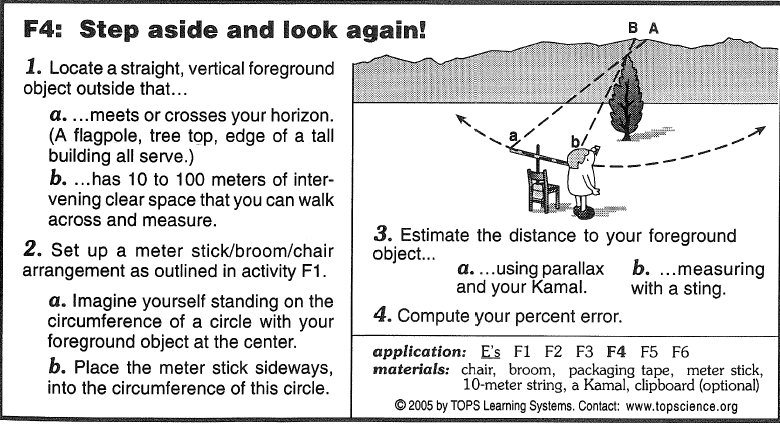
Parallax photos from opposite ends of a football field

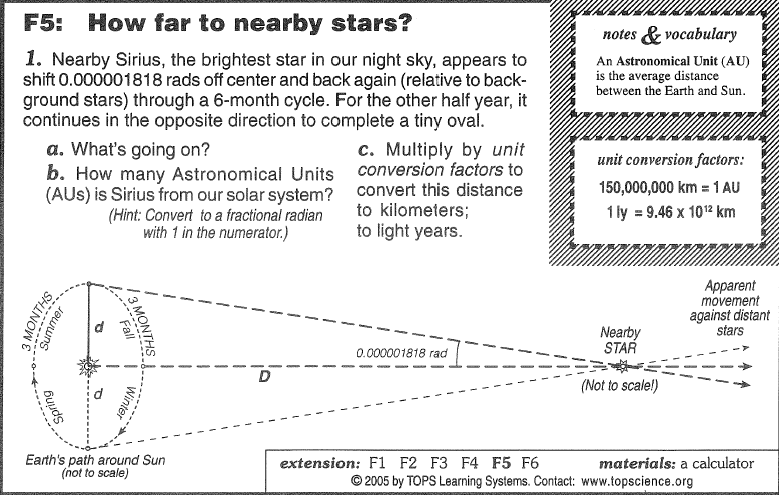
How does this apply to astronomy?
- Things appear smaller when they are farther away and you know this by the
angle that they form.
- Astronomers need a way to measure objects in the night sky with out
actually measuring them.
- One way is to use Parallax
- Parallax only works for objects that are relatively close (100 – 500 light
years away)
- If someone thinks they see a candle burning a thousand miles away it must
actually be an entire city on fire!
- The bright objects that GLAST will see must actually be huge events in our
universe because they are so far away and so luminous.
TOPS: Pi in the Sky!
- Pi is a Constant
- Radians & Degrees
- Counting Diameters
- Visual Acuity
- Tie you Kamel
- Look from Here and There
What will you do in your classroom
- Think over the many activities we have used today. What ones do you
think you will use in your classroom?
- When will you use them?
- Organized activities?
- Rainy Day?
- Why will you use them?
- How do activities such as these help students score higher of the MEAP?
Conclusion
NASA has an educational outreach program designed to help teachers bring the
excitement of space and active real world science into the classroom. In this
presentation we have demonstrated how some of these materials can be used not
only to help students understand Pi and how its applications can be used for
various types of real world calculations, but even how NASA
materials can be the core of a complete courses. Teachers, administrators, and
instructional designers should leave this session with a better understanding of
the role that free NASA materials may have in making your instruction as
exciting as the very Structure and Evolution of the Universe in which we live.
Sign in Sheets
We need to report on who was here so please fill your name and information out and
if you have done that,
you will get a copy of the booklet used primarily in today's presentation.
Resources
- GLAST Education and Public Mission Website
- Downloadable materials for this book (AND MORE):
- More Great materials from TOPS:
- If you want to order NASA materials,
About the author
Dr. Mary Garrett
is and
Educator/Ambassador for NASA’s Structure and Evolution of the Universe
Educational Outreach Program. Mary Garrett earned her PhD in Educational
Systems Development, (instructional technology emphasis) from Michigan State
University. She has taught at the post-Secondary level for more than 20 years.
She has won numerous awards for outstanding instruction and frequently presents
at International, National, and State conferences on instructional design and
educational technology issues. She is certified to teach at the secondary level and has developed instruction
and taught on-line since 1995. Retired from full time instruction, she now works
as an adjunct instructor for secondary and post secondary institutions.











 A MM bead Activity
A MM bead Activity



